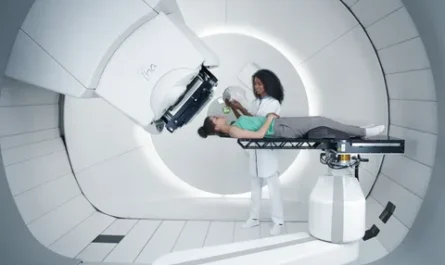
Stroke is one of the leading causes of death and disability worldwide. Every year over 800,000 people in the United States suffer from stroke. While many advances have been made in prevention and treatment options for strokes, more progress is still needed. Neurovascular devices have emerged as an important minimally invasive treatment option for patients suffering strokes and other neurovascular diseases. These devices are revolutionizing stroke care and improving outcomes for patients.
Evolution of Neuro-interventional Devices
The field of neurointerventional surgery originated in the late 1960s with the introduction of the first catheters designed for cerebral angiography. This allowed visualization of blood vessels in the brain in a minimally invasive manner. In the following decades, more sophisticated catheters and guidewires were developed to advance further into the cerebral vasculature and enable treatments. A major breakthrough came in the 1990s with the emergence of retrievable stents and coils. These microcatheter deliverable implants enabled minimally invasive treatments such as mechanical thrombectomy and aneurysm coiling to become standard of care for many neurovascular conditions.
Modern Devices for Stroke Treatment
For acute ischemic strokes caused by large vessel occlusions, mechanical thrombectomy has become the standard of care based on multiple clinical trials showing improved outcomes compared to medications alone. State of the art stent retrievers such as Trevo and Solitaire have high recanalization rates for occluded arteries in the brain. These self-expanding nitinol stents open up the blocked vessel when deployed across a clot and can be recaptured along with the trapped thrombus.
Newer aspiration systems have also emerged as effective options. The Penumbra System uses an indwelling catheter connected to an external aspiration pump. Continuous aspiration draws the clot into the catheter for removal. Other clearance devices like 3D Separator help break up and extract clots from small vessels. Combined with intravenous thrombolysis, these mechanical thrombectomy devices have significantly increased the number of patients who can be treated successfully for an acute ischemic stroke within the critical time window.
Implants for Cerebral Aneurysms
In the area of cerebral aneurysm treatment, advanced Guglielmi detachable coils continue to be the mainstay therapy option. These platinum coils are delivered via a microcatheter into the aneurysm sac where they induce thrombosis. New 3D and soft coils provide better filling of irregular aneurysm shapes. Flow diverters like Pipeline are emerging as an alternative to coiling for large and giant aneurysms. These self-expanding stents disrupt blood flow into the aneurysm, inducing progressive thrombosis.
Bioactive devices incorporating drugs are also under investigation. The Surpass flow diverter has polymeric surface structures eluting anti-inflammatory drugs. This may enable it to induce faster and more durable aneurysm occlusion compared to bare metal flow diverters. For patients who still need open surgery after endovascular treatment failure, flow replacement devices offer a less invasive alternative to traditional bypass surgeries. The new Pipeline Shield and Flow Re-Direction Endoluminal Device (FRED) are being studied for these complex cases.
Subsection: Role of Imaging Guidance
Advanced neurovascular imaging plays a crucial role in guidance and assessment of these minimally invasive procedures. High resolution 3D rotational angiography provides superb visualization of delicate cerebral blood vessels during endovascular treatments. Integrated ultrasound and Ct capabilities in newer angiography systems enable real time monitoring, better outcomes.
Intravascular ultrasound (ivus) and optical coherence tomography (oct) give surgeons microscopic views inside arteries for more accurate device placement and confirmation of adequate results. Ivu and oct are advancing rapidly with new lightweight and high frequency catheters well suited for intracranial Neurointerventions. fusion of pre-procedure Ct/mri with live fluoroscopy also improves navigation in tortuous vessels near delicate brain structures.
Novel Imaging technologies incorporating machine learning/AI show promise to enhance decision making. AI powered automatic detection of blockages in angiograms and measurement of vessel characteristics may help evaluate best treatment options. Virtual reality headsets are being explored to give surgeons immersive 3D views from different angles during complex endovascular procedures. Overall, advanced multimodality imaging is revolutionizing planning, guidance and evaluation of minimally invasive neurointerventions.
Future Outlook
As the efficacy and safety of neurovascular devices continues to improve, appropriate patient selection will be crucial to maximize benefit. More widespread screening programs may help identify asymptomatic high risk individuals earlier. Advances in endovascular tools, catheters, guidewires and coatings are poised to facilitate treatment of more complex cerebrovascular diseases and expand indications for minimally invasive therapies.
personalized medicine approaches incorporating a patient’s genetics, comorbidities and lifestyle factors will likely influence long term management strategies. Telemedicine technologies may play a larger role through remote proctoring and guidance for less experienced centers. Neurointerventional trials are also evaluating neuroprotective adjunct therapies to extend time windows and improve long term outcomes beyond just recanalization success. With continuous innovation and collaborative research, neurovascular devices will keep transforming the delivery of care for patients suffering from strokes and cerebral aneurysms worldwide.
In summary, neurointerventional devices have revolutionized the treatment of strokes and cerebral aneurysms. Advanced mechanical thrombectomy systems, embolization coils, stent grafts and imaging guidance have established minimally invasive endovascular approaches as the standard of care for many neurovascular conditions. Further innovation is positioning neurointerventional surgery to treat an even broader range of cerebrovascular diseases. With improved technologies and continued clinical trials, outcomes will continue improving for patients suffering from strokes and cerebral artery disorders.
*Note:
- Source: Coherent Market Insights, Public sources, Desk research
- We have leveraged AI tools to mine information and compile it


